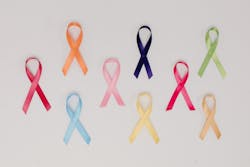Researchers at the Stanford Institute for Stem Cell Biology and Regenerative Medicine have devised a tool to examine how cells behave and interact in various environments of the body. They’ve used it to better understand how cancer develops and can be treated.
“Now we can look at the building blocks of tissue — the way that the whole cellular ecosystem is structured — rather than just looking at the types of cells present,” said Aaron Newman, PhD, Assistant Professor of Biomedical Data Science at Stanford University and a member of the institute. “It’s a much more powerful way of looking at tissue organization.”
The tool, called EcoTyper, combines new computer algorithms with those previously developed by the researchers to analyze cell types, how they are arranged in relation to one another, and what kinds of RNA messages the cells are creating. The researchers were able to analyze the interactions of cells in large amounts of bulk tissue, using computer analysis to determine where certain cell subtypes live in tissue and how they interact with their neighbors.
A paper describing the tool was published in the journal Cell. The article showcases EcoTyper’s capabilities with an analysis of the tissue architecture in different types of solid cancer tumors. A companion article, published the journal Cancer Cell, describes how EcoTyper was used to identify subtypes of lymphoma cells.
While lung cancer might look very different from bladder cancer or other types of cancerous tumors under the microscope, EcoTyper enabled the researchers to find 10 distinct multicellular communities, dubbed “ecotypes,” that exist in more than a dozen different tumor types. They also found that the presence or absence of certain ecotypes in a tumor was highly predictive for outcomes and often indicated what kinds of treatment would work best, even for different types of cancer, the researchers say.
In the paper published in Cancer Cell, the researchers sought to discern whether there are two different subtypes of a certain kind of lymphoma, as has generally been accepted in the field. Using EcoTyper, they analyzed the microenvironment found among and surrounding diffuse large B-cell lymphoma cells. By looking at how cancerous and noncancerous cells arranged themselves and interacted, they were able to differentiate between not just two subtypes, but nine different subtypes, of this lymphoma.
Because the researchers were working on tissue samples from previous lymphoma cases, they also had a record of how patients fared. “We found that not only were there many more subtypes of this B-cell lymphoma than previously recognized, but we also were able to show that knowing which subtype people had gave us an improved ability to make predictions about how the cancer would likely progress,” Steen said.

